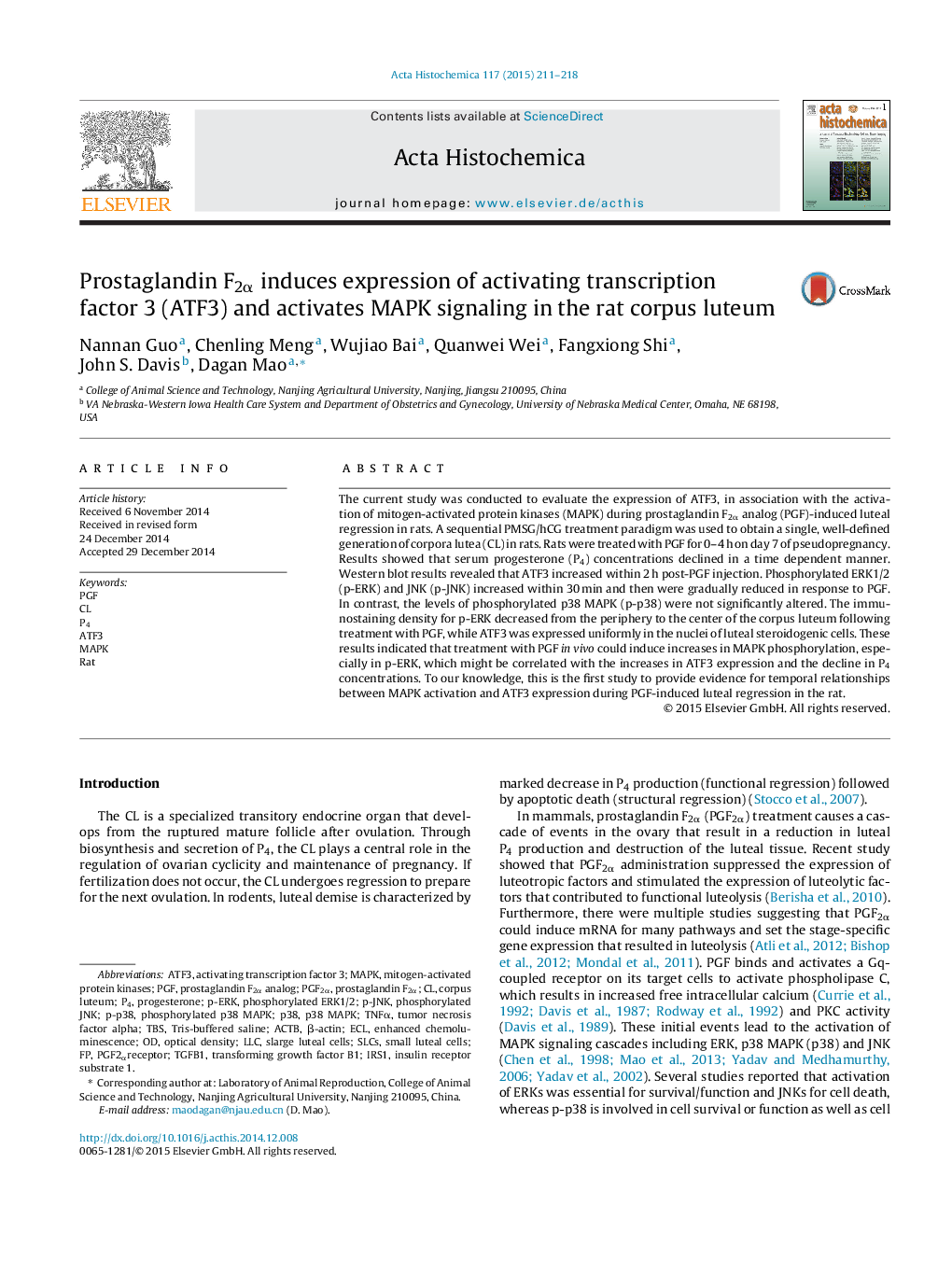| Article ID | Journal | Published Year | Pages | File Type |
|---|---|---|---|---|
| 1923576 | Acta Histochemica | 2015 | 8 Pages |
The current study was conducted to evaluate the expression of ATF3, in association with the activation of mitogen-activated protein kinases (MAPK) during prostaglandin F2α analog (PGF)-induced luteal regression in rats. A sequential PMSG/hCG treatment paradigm was used to obtain a single, well-defined generation of corpora lutea (CL) in rats. Rats were treated with PGF for 0–4 h on day 7 of pseudopregnancy. Results showed that serum progesterone (P4) concentrations declined in a time dependent manner. Western blot results revealed that ATF3 increased within 2 h post-PGF injection. Phosphorylated ERK1/2 (p-ERK) and JNK (p-JNK) increased within 30 min and then were gradually reduced in response to PGF. In contrast, the levels of phosphorylated p38 MAPK (p-p38) were not significantly altered. The immunostaining density for p-ERK decreased from the periphery to the center of the corpus luteum following treatment with PGF, while ATF3 was expressed uniformly in the nuclei of luteal steroidogenic cells. These results indicated that treatment with PGF in vivo could induce increases in MAPK phosphorylation, especially in p-ERK, which might be correlated with the increases in ATF3 expression and the decline in P4 concentrations. To our knowledge, this is the first study to provide evidence for temporal relationships between MAPK activation and ATF3 expression during PGF-induced luteal regression in the rat.
